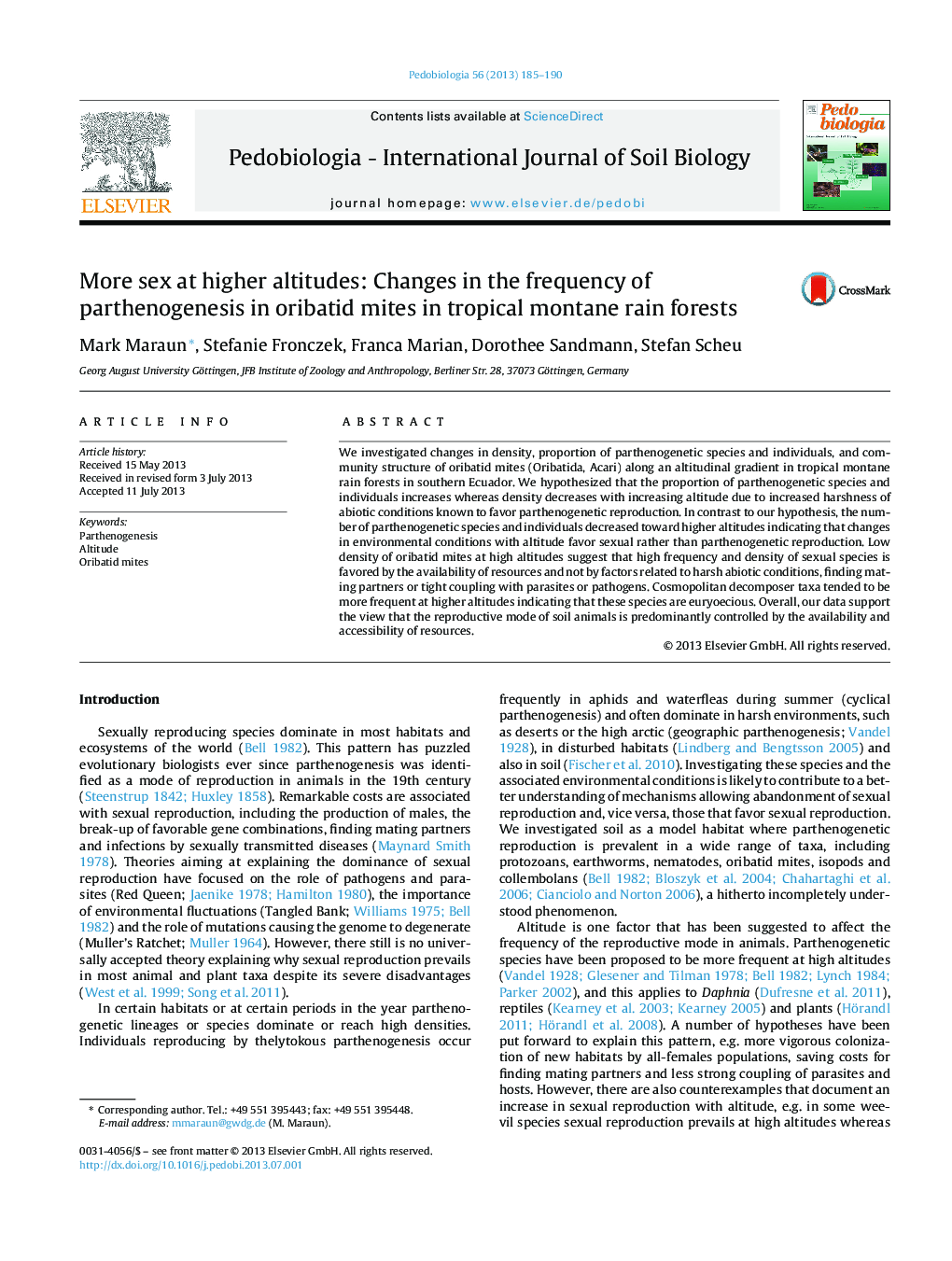| Article ID | Journal | Published Year | Pages | File Type |
|---|---|---|---|---|
| 2061083 | Pedobiologia | 2013 | 6 Pages |
We investigated changes in density, proportion of parthenogenetic species and individuals, and community structure of oribatid mites (Oribatida, Acari) along an altitudinal gradient in tropical montane rain forests in southern Ecuador. We hypothesized that the proportion of parthenogenetic species and individuals increases whereas density decreases with increasing altitude due to increased harshness of abiotic conditions known to favor parthenogenetic reproduction. In contrast to our hypothesis, the number of parthenogenetic species and individuals decreased toward higher altitudes indicating that changes in environmental conditions with altitude favor sexual rather than parthenogenetic reproduction. Low density of oribatid mites at high altitudes suggest that high frequency and density of sexual species is favored by the availability of resources and not by factors related to harsh abiotic conditions, finding mating partners or tight coupling with parasites or pathogens. Cosmopolitan decomposer taxa tended to be more frequent at higher altitudes indicating that these species are euryoecious. Overall, our data support the view that the reproductive mode of soil animals is predominantly controlled by the availability and accessibility of resources.
